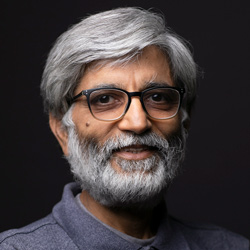Study by Sanjay Mehrotra Earns Harold Kuhn Award
The paper was named the best published in Naval Research Logistics over the past three years
An academic paper by Northwestern Engineering’s Sanjay Mehrotra has earned the Harold Kuhn Award for the best paper in the journal Naval Research Logistics.

Published in May 2020, “A Model of Supply-Chain Decisions for Resource Sharing with an Application to Ventilator Allocation to Combat COVID-19” was named the best paper published in Naval Research Logistics over the past three years. The award is named after the late Harold W. Kuhn, Professor Emeritus of Mathematics at Princeton University, who won the 1980 John von Neumann Theory Prize.
Mehrotra is a professor of industrial engineering and management sciences at the McCormick School of Engineering. Also the director of the Center for Engineering and Health who develops methods for decision-optimization under uncertainty by studying the geometric and algebraic properties of these problems, Mehrotra wrote the paper with postdocs Fengqiao Luo, Hamed Rahimian, Masoud Barah, and research specialist Karolina Schantz.
The paper outlines an optimization model for allocating and sharing a critical resource during a pandemic. The study found that a central agency such as the Federal Emergency Management Agency (FEMA) can act as a coordinator to oversee the sharing of critical resources in short supply, potentially making the system more efficient. Through proper risk management by different entities like states, the blueprint can be effective. The paper also contended that ramping up production early can avoid significant shortfalls.
The model was applied to study the allocation of ventilators by FEMA to different states during the COVID-19 pandemic. The team’s findings suggested that if less than 60 percent of ventilators were available for non-COVID patients, FEMA’s stockpile of 20,000 ventilators (as of March 23, 2020) would have been adequate to meet projected needs during times of slightly above-average demand. However, when more than three-quarters of available ventilators were reserved for non-COVID patients, various shortfalls were expected.
